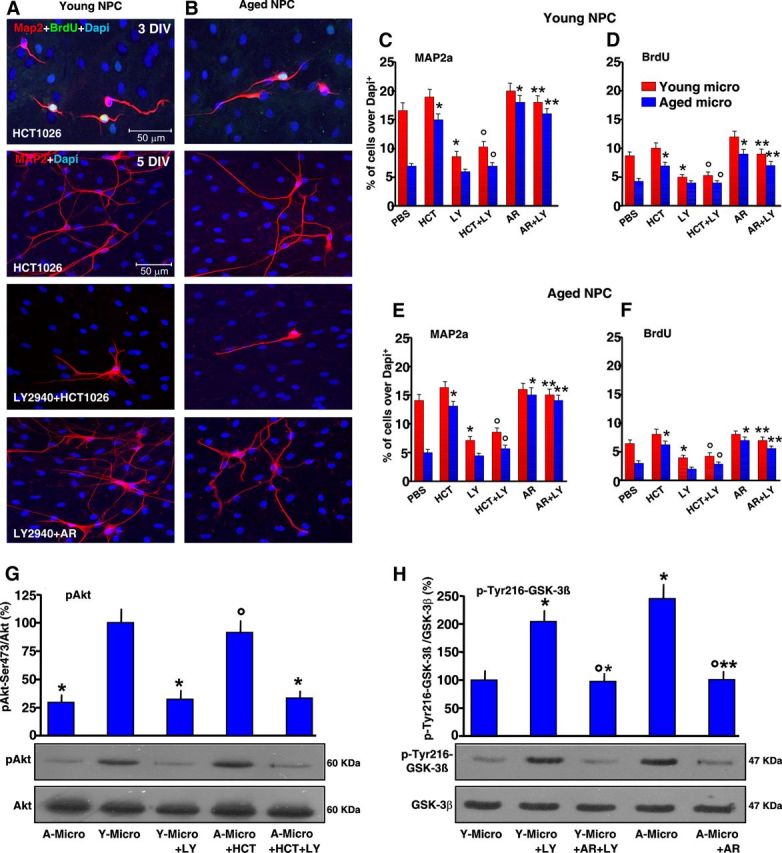Figure 7.

HCT1026 reverses aged-microglia-induced NPC neurogenic impairment via PI-3K/Akt signaling activation. Microglia monolayers from aged mice were treated with HCT1026 (10 μm) for 24 h and layered on the top of young (A, C, D) or aged (B, E, F) NPCs, in the indirect coculture paradigm, for assessment of proliferation with BrdU, and neuron differentiation with Map2a. The effect of young-microglia or aged-microglia HCT1026 was tested in the absence or the presence of the PI-3K inhibitor, LY294002 (LY, 10 μm). The effect of GSK-3β antagonist, AR-AO14418 (AR, 5 μm) was tested on LY294002-treated cocultures. A, B, Representative images showing young (A) or aged (B) NPCs cocultured with aged microglial inserts pretreated with HCT1026, showing Map2a (red) production and BrdU (green) incorporation, an effect reversed by LY294002. Inhibition of GSK-3β with AR counteracts LY294002-induced inhibition. C–F, Map2a+ cell percentages and BrdU incorporation in young (C, D) and aged (E, F) NPCs cocultured with either young or aged microglia, as indicated. *p < 0.05 versus PBS,°p < 0.05 versus HCT1026, **p < 0.05 versus LY294002. G, H, Western blotting of phospho-Akt-Ser473 and phospho-Tyr216GSK-3β in protein extracts from NPCs. The bands were densitometrically quantified on x-ray film using ImageQuantity One. Densitometric values, depicted as ratio of the phosphorylated form over total amount of the specific proteins, are plotted for p-Akt (G) and p-GSK-3β (H), expressed as percentage of control (Y-Micro). The means ± SEM of three individual determinations are presented. *p < 0.05 versus young microglia, °p < 0.05 versus LY, **p < 0.05 versus aged microglia. A-Micro, aged microglia; Y-Micro, young microglia.
